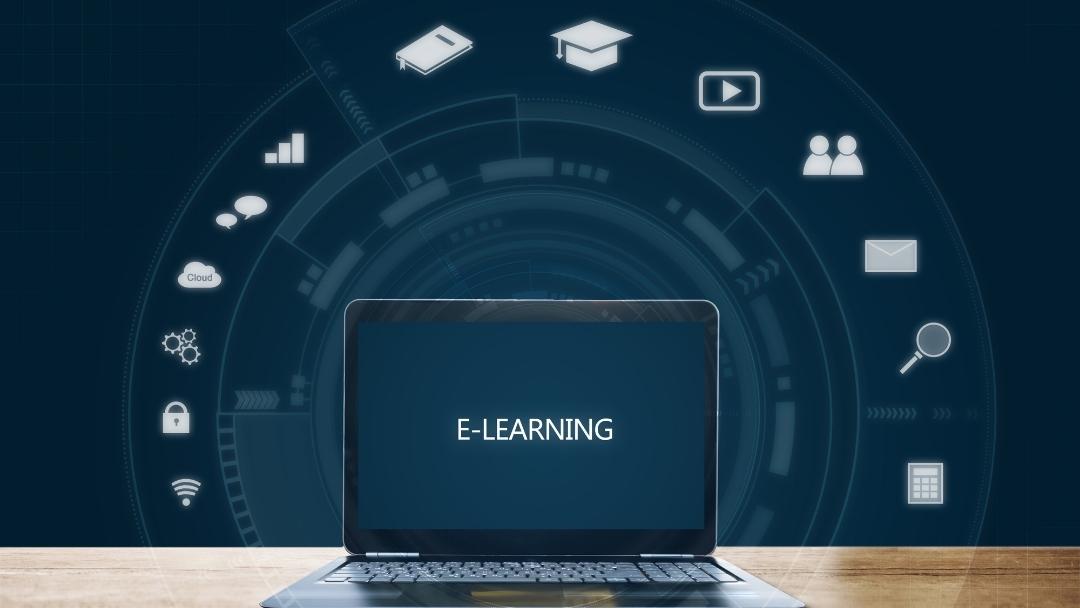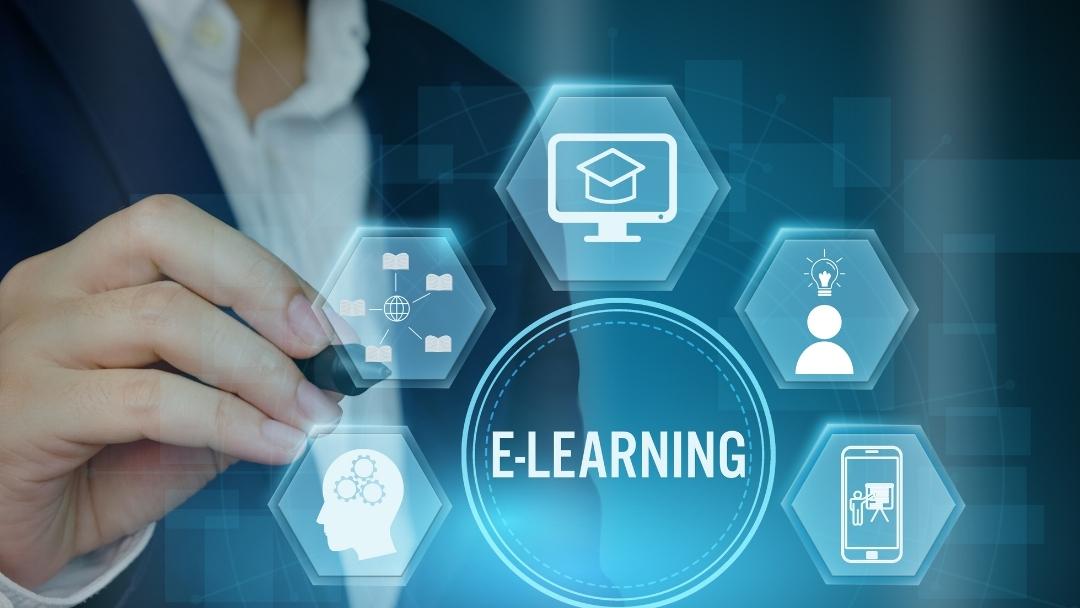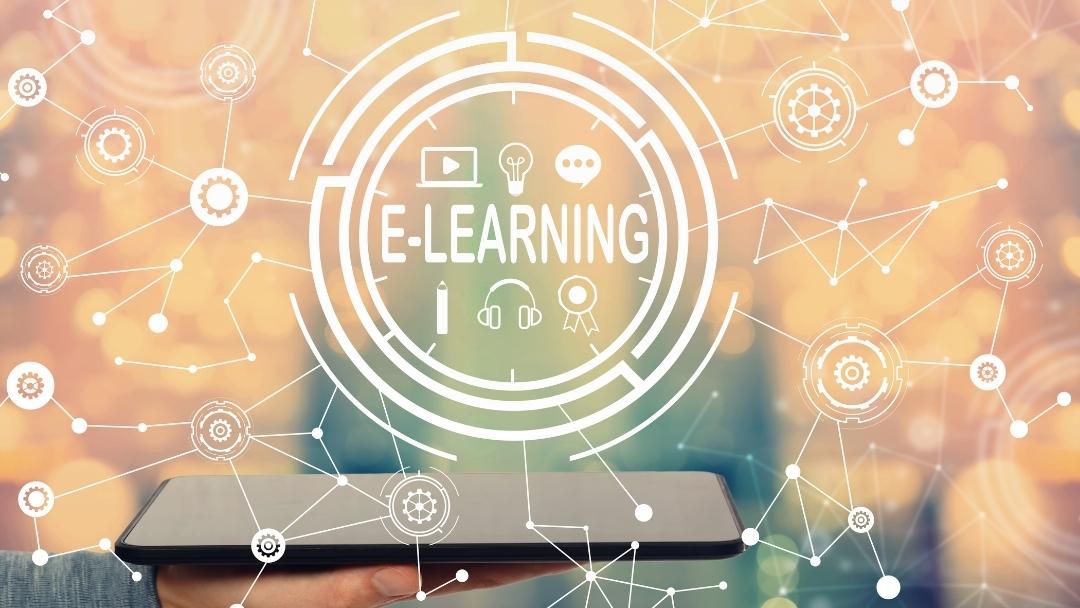What is e-learning software?

E-learning software solutions have changed the way of learning: As you know, there is definitely something magical about e-learning. Something that we would never have dared to dream of when we went to school as children.
What are the elements of a schoolboy’s experience, let’s say from the 80’s:
- a massive satchel, loaded with heavy textbooks
- the cold weather that forces him to cover up from late fall to early spring (and the desire to stay home warm)
- the need to catch a bus or train, and the complications that result from strikes
- using crowded public transportation
How many times have we had this nightmare? Waking up in a panic while feeling in your gut the anxiety of being “late” for class. The feeling that hell is waiting for us.
The quest for knowledge was inseparable from these various constraints. And this is what is changing with e-learning.
Take a look at: Best Elearning Platforms available on the market
Definition of e-learning
E-Learning means, the process of learning something is organized remotely and online, from the computer tool (computer, tablet, smartphone and… an internet connection). It provides a learner or a group of learners with modules that deliver educational content and that can include different interactions such as mini-games, multiple choice questionnaires and quizzes.
Other names include:
- distance learning
- online learning
- virtual learning
- remote earning
E-learning software is certainly a tool which induces a new way of learning. As the European Union underlines in its definition: “e-learning is the use of new multimedia Internet technologies to improve the quality of learning by facilitating access to resources and services on the one hand, and exchanges and collaboration at a distance on the other”.
The e-learning experience: being an e-learner
Taking online courses means reversing the model of the school experience.
Instead of the student going to the teacher, the teacher comes to the student through the Internet connection. The student can therefore have access to knowledge from his or her bedroom or living room. In the context of professional training, the employee learns from his workplace. The classroom becomes virtual and mobile.
Instead of having a teacher giving a course at a given moment, the student has an audio or video recording of the course that can be played over and over again until he or she has completely understood. The course becomes accessible 7 days a week, 24 hours a day.
Instead of having a lecture, the trainer can deliver the theory on an electronic document (written, audio or video) and transmit it to the learner. The learner can consult it at home. The face-to-face course can then be devoted to individualized support. The pedagogy is adapted to each individual.
Choose when you will learn
Instead of having a rigid schedule with imposed subjects, the distance learner chooses when and on what subject he/she will train. The learner is the one who manages the organization of his day. The employee determines the best time to consult his training. E-learning allows them to control the time of their learning.
It was the explosion of the Web in the 2000s and its ability to give everyone the gift of ubiquity that made this revolution possible. Then LMS appeared: learning management systems. It’s the modern version of the library. But in fact, it is much more than that.
The LMS is a training platform, i.e. a web software dedicated to the storage, organization and distribution of educational content, in order to provide targeted learning to a community of learners (school or company). It does not necessarily require an Internet connection, if the learner is directly connected to an internal server. The LMS platform can also be used to collect data for administrative purposes, reporting and statistics.
The different typologies
To understand the subject in its entirety, there is nothing like consulting our digital learning glossary.
However, we can recall here the main characteristics of e-learning software solutions.
First of all, we speak of “synchronous” training when the trainer and learners are in the same space of time: as in a video conference, a webinar or a chat session. We speak of an “asynchronous” system if there is a delay between the time when the instruction is recorded and the time when it is viewed. A delay between the question and the answer is also called “asynchronous” as in forums and emails.
There are 100% online courses: everything is done remotely. However, we can recall here the main characteristics of e-learning.
First of all, we speak of “synchronous” training when the trainer and the learners are in the same space of time: as in a video conference, a webinar or a chat session. We speak of an “asynchronous” system if there is a delay between the time when the instruction is recorded and the time when it is viewed. A delay between the question and the answer is also called “asynchronous” as in forums and emails.
There are 100% online courses: everything is done remotely. Today, there are many tools that allow for remote tutoring or mentoring: smartphones, Skype and other “web-conference” type tools, social networks, not to mention email.
Finally, we can implement blended learning approaches that combine e-learning with traditional learning, a mix of distance and face-to-face learning.
Improving the quality of learning
E-learning allows for the provision of educational content to the learner and the use of IT tools to manage, administer and monitor their progress.
With Web 2.0 and the various means of interaction, e-learning allows the advantages of different approaches to be combined. Peer learning can be facilitated through document sharing, social media (such as a Facebook group) or a corporate social network.
We can adapt the training path to each learner and thus manage different profiles together. You can also choose to make short modules of “microlearning” type.
You can easily update the courses, add or remove modules.
E-learning and digital learning
Digital learning widens the scope of possibilities compared to e-learning. It encompasses different interactions that can be combined, whether digital or not. Among the most emblematic devices, we find video, which is very popular, but also all the fun devices (Serious Game, immersive reality) and social learning, which offers learning with others and by others.
We can even have a classroom with tablets or smartphones that allow us to consult online educational resources.
It is rather rare to have a pure e-learning approach today. The main flaw of distance learning is that it leaves the learner alone in front of his computer. Without support, they are tempted to give up if they are unable to resolve their difficulties by themselves.
It is digital learning that is widely used in both the academic and corporate training fields.
What are the most needed features of e-learning software solutions?

According to a Swedish student’s doctoral thesis, 90% of online applications identified as educational are actually just exercises and assessments. So, what features do we look for to promote the learning process itself.
As part of his doctoral dissertation entitled “What are the characteristics of good educational software?”, Björn Sjödénun, a student at the Department of Cognitive Science at Lund University in Sweden, wanted to identify and analyze the characteristics that make educational software effective learning tools. To do so, he relied on current knowledge in cognitive science, particularly in the field of learning.
Thus, 100 applications identified as educational were analyzed by the researcher. According to his analysis and evaluation criteria, barely half of them could actually be considered as learning tools. Of these, only 17 provided some form of feedback to learners. Sjödénun believes that about 90% of the online applications identified as educational are in fact simply exercises and assessments.
What does Sjödénun believe are the key features of e-learning software solutions that are likely to make it relevant as educational software?
Feedback
First: effective and relevant feedback. An educational application should be able to comment on the learners’ answers, guide them and suggest, if necessary, alternatives to bring them to the intended learning. As mentioned earlier, Sjödénun believes that many applications are really just online tests.
Specific learning
Secondly, aim for specific learning. According to Sjödénun, educational tools should not only aim to evaluate, but also to make people learn. For the researcher, a relevant educational e-learning software solution is one that brings a plus compared to an existing support or teaching. He gives the example of an application that can simulate and visually represent an explosion, which is not possible with a science book.
Complex task, simple interface
It is important to avoid confusing technical complexity with learning relevance. A software program can be pedagogically relevant while remaining technically very simple. On the other hand, an application or a platform at the cutting edge of technology can have very little educational potential. You should focus on applications, software and platforms that allow for meaningful and complex tasks.
Truly educational software has enormous educational potential, provided it meets certain characteristics. He calls, however, for the thoughtful use and development of educational applications. While well-developed software that meets specific characteristics can enhance learning, in other cases, such as when it asks learners to perform tasks that are too simple or does not provide meaningful feedback, it can, in his opinion, diminish learning.
Conclusion: Why use e-learning?
E-learning was already part of a trend even before there was a pandemic and showed the need to invest and learn about the digital universe. Now more than ever, these e-learning platforms will continue to grow.
After all, e-learning makes it clear that it is possible to optimize time, reduce costs, have diversity in training and improvement, and streamline learning and achieve satisfactory results.Want to know more about this method? Talk to us if you need help implementing e-learning software solutions in teaching and training strategies in your workplace.






